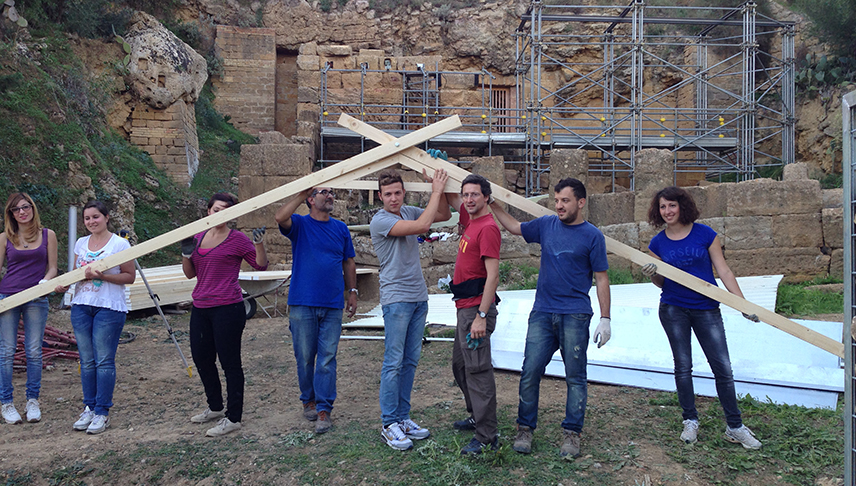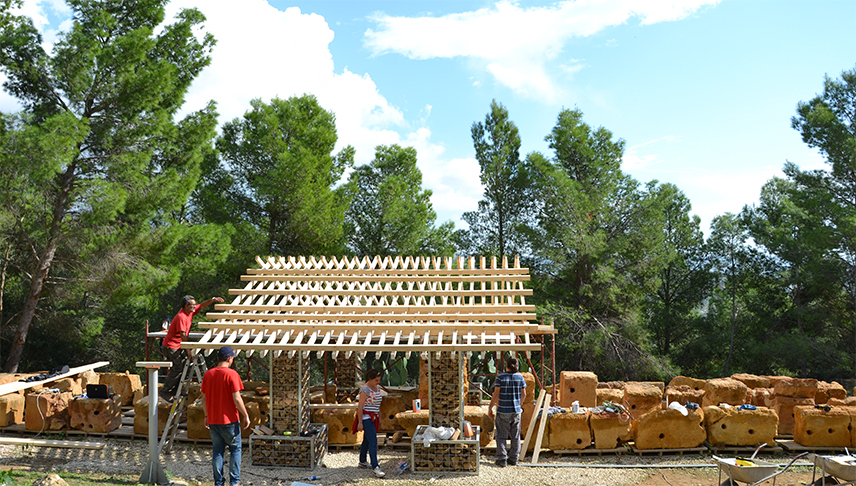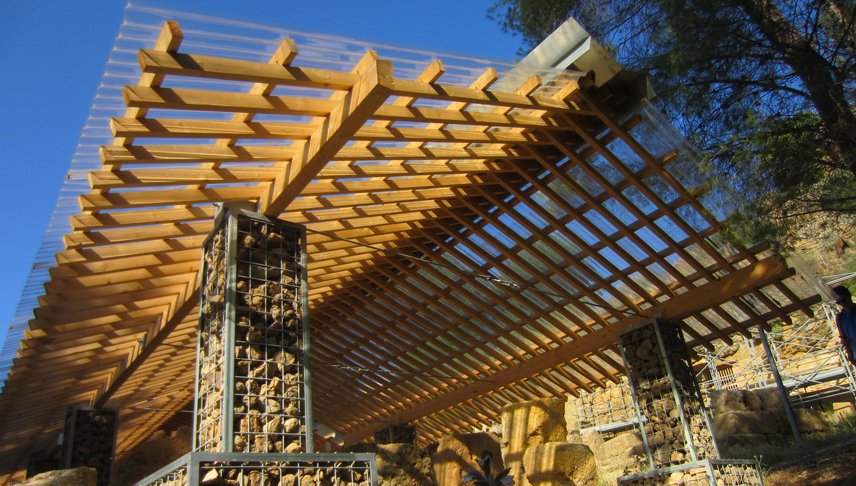The international workshop “Architecture for acheological Sites” offers the construction of a framework for the protection of testimonies sit in the Archaeological Park of the Valley of the Temples in Agrigento, with the sponsorship of Unesco, in order to identify new types modular and flexible, adaptable to different needs.
The workshop arised under the Director of the Park Arch. Giuseppe Parello and Arch. Carmelo Bennardo propose, in collaboration with JIA -Japan Institute of Architecture (National Chamber of Architects of Japan). Students from the University of Tokyo with the support of Toyo Ito Foundation, Polytechnic of Milan and the University of Palermo applied in the construction of temporary experimental prototypes for the protection of the archaeological excavations. It was requested that the prototypes were respectful of the landscape and trying to merge with it. For this reason all the projects are characterized by the use of natural materials. The professors of the Polytechnic of Milan, Marco Imperadori and Andrea Vanossi, of the University of Tokyo, Salvator – John Liotta and Yuta Ito, and of the University of Palermo, Fausta Occhipinti, followed the work of the students during this experience. The scientific advisor of the workshop was the world-renowned architect Kengo Kuma.
The Polytechnic of Milan under the guide of Marco Imperadori and with the support of Ateler2 has realized the project AkragaShelter, which is sited at the rock temple of the sacred spring dedicated to Demeter, Zeus’s wife. A special and sacred place, where architecture and nature combine and join together in an empathetic way.
The small pavilion, about 20 square meters, was built to protect some portions of the temple, waiting for a possible relocation. However, this system could be used in the Park Valley of the Temples also for other achievements.
Due to the sacredness of the place and the impressive archaeological sit , it was decided a simple and elegant solution, both from the composition and the use of the natural materials. This solution had also a reasonable cost.
, it was decided to adopt some Japanese references, in a fertile way, as well as local ones.
As the design work was shared with the University of Tokyo, Kengo Kuma Lab, which has, however, developed its own pavilion, the aim has been conjugating the Zen Eastern mysticism and the greek classicism. The massive columns of the Greek temples of Agrigento are retrieved from galvanized steel gabions, filled with local stone, honey-colored, which serve as an anchor. The slope of the roof, with an angle of 22.5°, like the Temple of Concordia, is another important reference. Finally, the wooden roof evokes the typical gable roof of greek temples. These are in addition to the most important tribute to the Japanese temple, the Temple of Ise, made of Inoki wood (cypress), both for its temporality (is disassembled and reassembled every 20 years), and the solution to the summit of three-hinged arches surmounted by a ventilation channel and collection of water V-shaped. AkragaShelter is a tribute to an ancient culture that fits well in the natural environment of the valley.
The roof is completed by a corrugated fiberglass, white like a milk, which gives vibration to the house and lit up at night. This remember a Japanese lamp made of rice paper.
October 27, 2013 – November 2, 2013
SCHOOL:
UTDA , University of Tokyo
Politecnico di Milano
University of Palermo
ORGANIZATION:
Landscape Park and the Valley of Temples – Director Joseph Parello , Carmelo Arch Bennardo
PROFESSORS :
UTDA : Salvator – John A. Liotta , Yuta Ito, Taichi Kuma
Politecnico di Milano : Marco Imperadori , Andrea Vanossi
University of Palermo : Fausta Occhipinti
STUDENTS :
Politecnico Milano – Campus of Lecco: Antonella Colistra , Peter Giamei , Giorgio Ratti
University of Palermo – Agrigento Polo : Sabrina Mazzarisi , Celeste Simon, Ilene Viria Parisi and Di Maria
CONSTRUCTION COMPANY:
DIPARC Srl of Vito and MichELE D’Anna

















